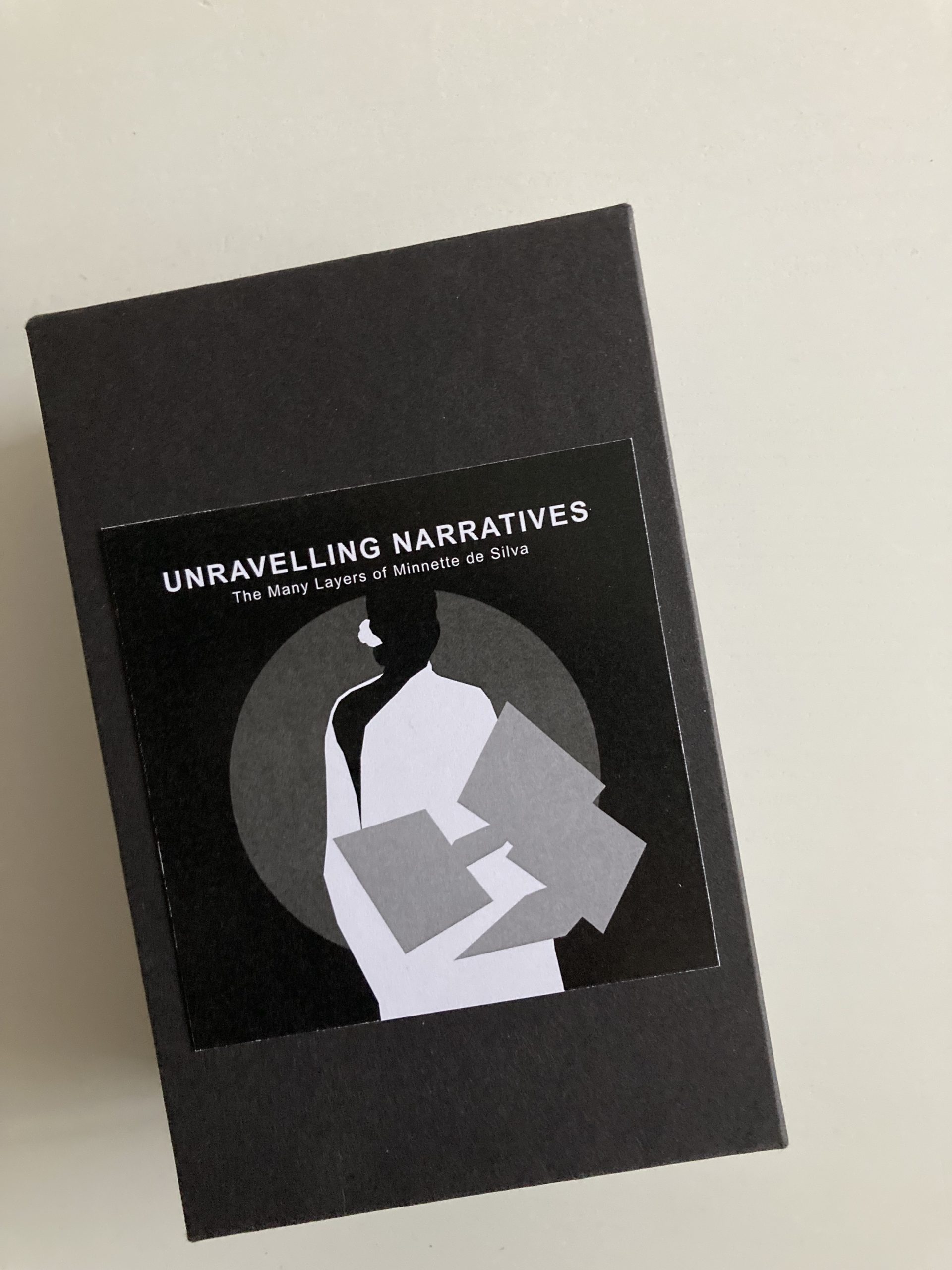Unravelling Narratives
Assemble layers and discover the entangled history of Minnette De Silva and the Peris house.

Introduction:
Unravelling narratives is a three dimensional card game that allows players to understand and develop the stories behind the Pieris House, a design by Minnette De Silva. By using different types of cards, the players can choose between elements, issues and actors revolving around the building of the house and, by layering these cards in different sequences, they will be able to create the narratives behind it. This structural card method, inspired by Kodama, seeks to entertain players, while enabling them to search deeper into the life and work of the Sri Lankan architect and the history of her buildings, and how they are related to broader questions of colonialism, environmentalism and regionalism.
The Context:
It was the year of 1952, and life in Colombo was different in newly independent Sri Lanka. Since the independence movement before 1948, many families who were becoming part of this new middle/upper class were trying to build an identity for a new nation. They wanted this search for an identity to bring hope to their everyday lives. And there is no better place to start this movement than where they feel safe, warm, comfortable: their homes.
It is in this context that Minnette De Silva, the first Ceylonese woman architect to be an associate of the RIBA, started to make her way into being a pioneer in what she herself called a “modernist regional” approach. While some other architects in the tropics were trying to mimic renowned European architects of the west, De Silva worked with modernist elements in her own way and questioned what they meant in the face of Sri Lanka’s cultural and regional needs. For her, the preservation of Ceylon’s traditional crafts and the employment of local craftsmen to do it were very important, so these aspects were very present in her architectural practice.
How to play:
This game contains 4 sets of cards and 6 cards for each set.
The cards consist of a front design and a back description/explanation.
These are:
INPUTS CARDS: The starting card. These cards will be drawn in the beginning of each round to help the players follow an input to a new narrative regarding the house.
ELEMENT CARDS: These cards represent a structural or decorative element in the Pieris House.
FRICTION CARDS: These cards represent a problem, certain forms of contradictions or tensions that de Silva had to negotiate to continue with her architectural work.
ACTORS CARDS: These cards represent different characters who were involved in the process of designing and building the Pieris.
The first player chooses one of the input cards and reads it to the group. Next, either separately or together, the players should decide which card from the three other sets (elements, actors and frictions) best suits the input question. They will then end up with one input card, one element card, one actor card and one friction card, that together create a narrative. The last three cards can be drawn in any order the players prefer (but it is easier if you draw the element card first!).
If all the players agree with that combination, they can start connecting the four cards by their joints, creating a 3D shape. They can leave that aside and move on to the next round, where they will again draw an input card from the deck and try to create a new story.
The first part of the game ends when the players have six different stories, each one composed by four cards, one from each deck. At the end of the game, there shouldn’t be any cards left. The players can then check the answers in the answer key. However, you can keep on playing and make complex connections and discuss why you think and connecting things across
Since all the six stories are connected through different aspects, when they finish the first set of 6 narratives each containing 4card they should try to make connections across the narratives. They can choose any card between two combinations to connect to each other. The important thing is that the cards original four card narratives stay connected together. When all combinations are joined together the players will their own unique 3D story structures consisting of layer’s of De Silva’s story.